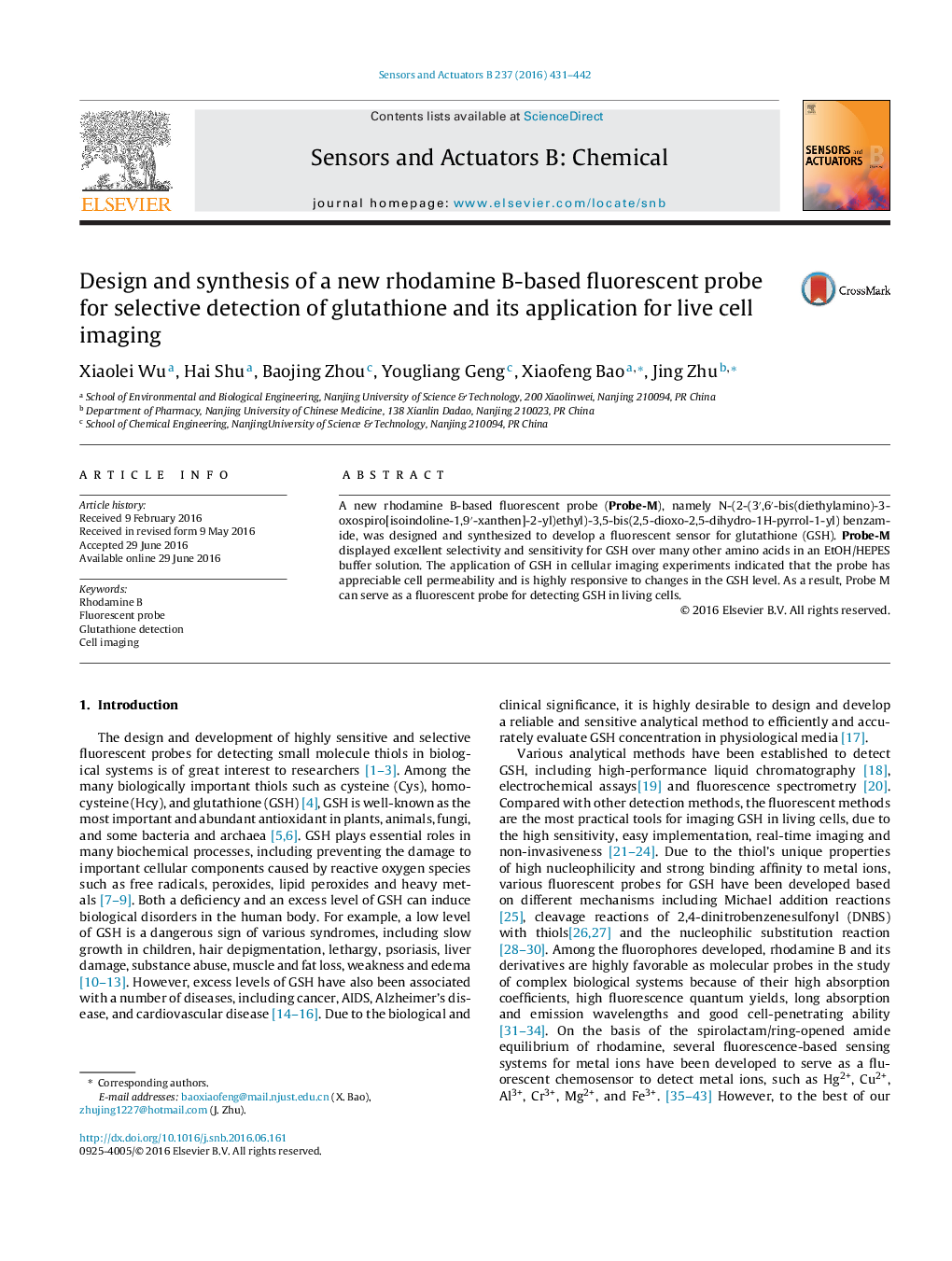| Article ID | Journal | Published Year | Pages | File Type |
|---|---|---|---|---|
| 742273 | Sensors and Actuators B: Chemical | 2016 | 12 Pages |
•A new Rhodamine B derivative based on a maleimide moiety was designed and synthesized for the development of a fluorescent chemical sensor for glutathione (GSH).•UV–vis absorption and fluorescence spectroscopic studies show that Probe-M exhibited a high selectivity and sensitivity towards GSH among many other amino acids in an EtOH/HEPES (3:2; v/v; 600 μM, pH 7.36) solution.•The 1:2 coordination mode was proposed on the basis of Job’s plot and High resolution Mass spectrometry results.•Fluorescence cell studies of Probe-M in both Hepg2 cells and Huvec cells further demonstrated that the Probe-M could be served as a potential fluorescent probe to detect GSH in living cells.
A new rhodamine B-based fluorescent probe (Probe-M), namely N-(2-(3′,6′-bis(diethylamino)-3-oxospiro[isoindoline-1,9′-xanthen]-2-yl)ethyl)-3,5-bis(2,5-dioxo-2,5-dihydro-1H-pyrrol-1-yl) benzamide, was designed and synthesized to develop a fluorescent sensor for glutathione (GSH). Probe-M displayed excellent selectivity and sensitivity for GSH over many other amino acids in an EtOH/HEPES buffer solution. The application of GSH in cellular imaging experiments indicated that the probe has appreciable cell permeability and is highly responsive to changes in the GSH level. As a result, Probe M can serve as a fluorescent probe for detecting GSH in living cells.
Graphical abstractFigure optionsDownload full-size imageDownload as PowerPoint slideA novel rhodamine B-based fluorescent sensor (Probe-M) for glutathione (GSH) was designed and synthesized. Probe-M displays an excellent selectivity and sensitivity for GSH over many other amino acids in an EtOH/HEPES buffer solution.
